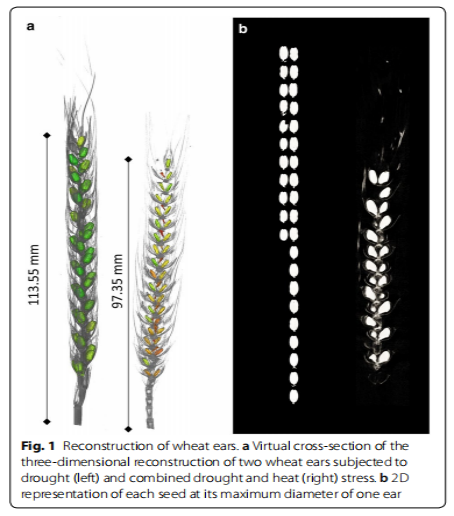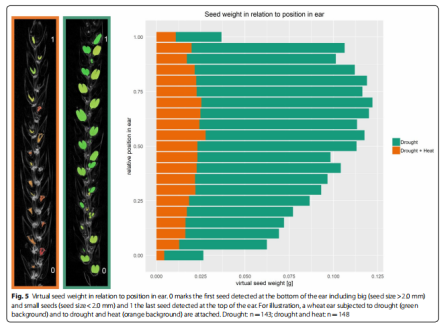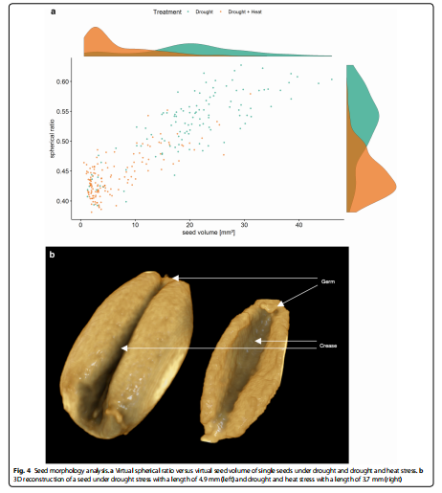Fraunhofe在植物断层扫描CT发表种子表型研究论文的应用
Fraunhofer植物计算机断层扫描系统采用微焦点X射线成像原理进行分辨率三维成像,可以在不破坏样品(无需染色、无需切片)的情况下,获得高精度三维图像,显示样品内部详尽的三维信息,并进行结构、密度的定量分析,适用于观察植物化石样品结构和植物活体组织的细胞结构,近年来被广泛应用于结构学、组织学、生物学特别是古生物学等研究领域,例如花、果实、种子、根系等研究。



Fraunhofer研究院是世界先进的应用技术研究院,很多工业技术都源自于该研究所。Fraunhofer专门成立的植物表型CT研究组致力于CT技术应用在植物的表型研究上。与传统医学CT不同,植物CT研究需要独特算法和软件等,Fraunhofer研究院在该研究领域位于世界前沿。
近年来,Fraunhofer团队一直致力于将计算机断层扫描技术应用于植物表型研究领域,特别是专注于植物结构高分辨率无损检测。其中一个研究方向为研究外在胁迫因素对植物微观结构的影响,研究方向有木质部结构如何对胁迫,如干旱做出反应。在干旱环境下,一些植物不再为叶片或整个枝条提供水分。研究另外一个方向是不同植物基因品系的内部微观结构特征。
Fraunhofer开发出了便携式、台式、落地式以及高通量等多个系列专门针对植物表型研究开发的计算机断层扫描系统。
Drought and heat stress tolerance screening in wheat using computed tomography
Jessica Schmidt1, Joelle Claussen2*,Norbert Wörlein2, Anja Eggert2, Delphine Fleury1,3, Trevor Garnett1and Stefan Gerth2
Abstract
Background:
Improving abiotic stress tolerance in wheat requires large scale screening of yield components such as seed weight, seed number and single seed weight, all of which is very laborious, and a detailed analysis of seed mor- phology is time-consuming and visually often impossible. Computed tomography offers the opportunity for much
faster and more accurate assessment of yield components.
Results: An X-ray computed tomographic analysis was carried out on 203 very diverse wheat
accessions ,which have been exposed to either drought or combined drought and heat stress. Results demonstrated that
our computed tomography pipeline was capable of evaluating grain set with an accuracy of 95–99%. Most accessions exposed
to combined drought and heat stress developed smaller, shrivelled seeds with an increased seed surface. As expected, seed weight and seed number per ear as well as single seed size were significantly reduced under
combined drought and heat compared to drought alone. Seed weight along the ear was significantly reduced at the top and bottom of the wheat spike.
Conclusions: We were able to establish a pipeline with a higher throughput with scanning times of 7 min per ear
and accuracy than previous pipelines predicting a set of agronomical important seed traits and to visualize even more complex traits such as seed deformations. The pipeline presented here could be scaled up to use for
high throughput,high resolution phenotyping of tens of thousands of heads, greatly accelerating breeding
efforts to improve abiotic stress tolerance.
Keywords: X-ray, High-throughput, Phenotyping, Yield, Seed morphology, Genetic diversity





